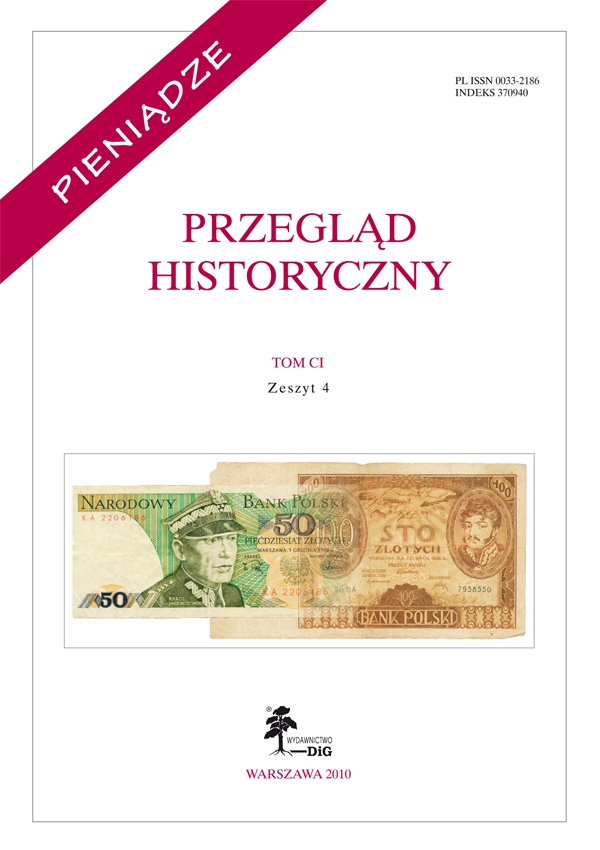Moneta episcopalis. Mennictwo biskupie w Europie Środkowej X–XIII w. i jego zachodnioeuropejski kontekst
Słowa kluczowe:
mennictwo biskupie, Europa Środkowa, średniowieczeAbstrakt
Moneta episcopalis. Episcopal Minting in Central Europe and Its Western European Context
Marcin R. Pauk points out that no primary sources testify to the circulation of coins emitted by ecclesiastical institutions in Hungary, whereas in Poland and Bohemia their functioning was more frequent than the modern historians are willing to admit. Contemporary historiography records very few instances of ecclesiastic minting. But this is due to a number of factors: the conviction — much to the liking of modern historians — that early–medieval Polish and Czech minting was highly centralized just like other administrational structures; the prevailing opinion that coin emissions were limited by the fact that they provided for local markets only; and finally the view that some of the produced coins could have been bracteates lacking inscriptions, thus their attribution at the present state of research is impossible.
The appearance of ecclesiastical coins was due to the reception of the German example where the rulers quite often bequeathed the right to mint coins to Church institutions. This started with the last years of the Carolingian monarchs and developed under the Saxon, Salian and Hohenstaufen rulers. Its aim was to provide for the economic needs of the estates of the bishops and monasteries were market places were located, which at the same time were locations of fiscal cameras.
Central Europe received this phenomenon with a certain delay. In Poland, if one disregards the difficult in interpreting 11th century denarii with the head of St. John the Baptist, attributed to the bishops of Wrocław, minting privileges and bishop coins, which resulted from these privileges, stem from the 13th century at the earliest. They can be linked with the establishment of great episcopal landed–estate complexes such as the Duchy of Nysa–Otmuchów in Silesia, the Kołobrzeg region in Western Pomerania, the Kielce region in the Diocese of Cracow, the Żnin and Łowicz complexes in the Archdiocese of Gniezno and the Krobia complex in the Diocese of Poznań. We also know of coins attributed to the minting activities of the bishops of Płock and Włocławek, the Cistercian abbeys of Jędrzejów and Wąchock, and we know a minting privilege for the Cistercians of Łekno. After the break of the 13th and 14th centuries, such minting practices can be only found in Silesia and Western Pomerania, where bishops became feudal dukes.
The oldest denarii of the bishops of Prague in Bohemia with the inscription HIC DENARIUS EST EPIZ[copi] are dated at the end of the 10th century and attributed either to St. Adalbert or his successor Thiadag. Another centre of minting was the Moravian complex of episcopal estates in the vicinity of Podvína, which until the 12th century was an object of contention between the bishops of Prague and Olomouc. Marcin R. Pauk is convinced that the beginnings of minting activities there can be linked with the times when Moravia was incorporated to Bohemia, although there is an opinion that they can be traced back to the Great Moravia period.
Marcin R. Pauk stresses that the production of coins by ecclesiastical institutions derived more from economic than prestigious functions, and that it provided for the needs of the episcopal estates. In the light of this opinion the hypothesis that granting of minting privileges to Church officials was aimed at assisting the financing of monumental ecclesiastic constructions seems to miss the point.

